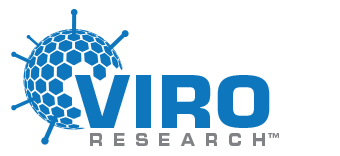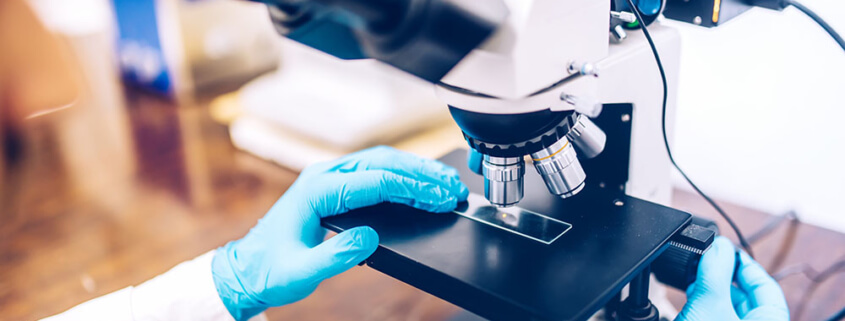By David Kilpatrick, PhD and Abbas Vafai, PhD
INTRODUCTION: The detection and differentiation of HSV-1 & -2 infections present challenges in a hospital point of care environment. There are many laboratory tests which can be performed, including serological assays, polymerase chain reactions, as well as virus neutralization and/or culture. However, only simple, quick serological assays, provide for rapid POC analysis. The close amino acid sequence homology between HSV-1 & -2, presents another challenge for type specificity. In this paper, Kalantari-Dehaghi et al.,1Kalantari-Dehaghi M, et al., 2012 J. Virol 86:4328-4339. Discovery of Potential Diagnostic and Vaccine Antigens in Herpes Simplex Virus 1 and 2 by Proteome-Wide Antibody Profiling. presented excellent data on the antigenic comparisons of both viruses.
DISCUSSION: The authors in this paper produced HSV-1 and -2 proteome microarrays by PCR in a T7 expression vector followed by an expression in E. coli-based in vitro transcription-translation system (IVTT) and probed them against a panel of patient sera using commercial gG-1 (HSV-1) and gG-2 (HSV-2) enzyme-linked immunosorbent assays. Reactive antigens for both HSV-1 and -2, as well as several which were cross-reactive between both virus types were identified. They found both membrane and non-membrane viral proteins were antigenic; however, the type-specific antigens were predominantly membrane proteins. The most commonly recognized antigens were structural. They derived P values by comparing seropositive and seronegative donors using Bayesian t-tests. Twenty-two HSV-1 antigens which were seroreactive with HSV-1 seropositive group were identified. Of those, glycoproteins G and E (US4 and US8) yielded the two highest HSV-1 type-specific signals. The HSV-1 seropositive group also recognized 9 HSV-2 antigens. They also identified 33 HSV-2 seroreactive antigens in the HSV-2 sero- positive group, and 19 of these also reacted to HSV-1 antigens. For HSV-2, the UL44/gC and US6/gD were the best type-specific antigens. While US4/gG has been used for several type-specific tests for HSV-1, their data suggests that UL44/gC might be a candidate antigen for the development of HSV-2 type-specific tests (97% specificity). They suggested that ideal antigens for serodiagnostic assays may be less dependent on membrane proteins. Others have suggested that the most important T cell epitopes in HSV may be integument or other noncapsid proteins2Carmack, MA et al 1996. J. Infect. Dis. 174:899-906. T cell recognition and cytokine production elicited by common and type-specific glycoproteins of herpes simplex virus type 1 and 2. 3Hosken N, et al. 2006. J. Virol. 80:5509-5515. Diversity of the cD8+ T-cell response to herpes simplex virus type 2 proteins among person with genital herpes. 4Koelle DM, et al. 1994. J. Infect. Dis. 169:956-961. Direct recovery of herpes simplex virus (HSV)-specific T lymphocytes clones from recurrent genital HSV-2 lesions. 5Koelle DM, et al., 1994. J. Virol. 68-2803-2810. Antigenic specificities of human CD4+ T-cell clones recovered from recurrent genital herpes simplex virus type 2 lesions.. Tegument proteins, such as HSV-2 UL41 (and several others) have been identified as major targets for effector T cells 6Carmack, MA et al 1996. J. Infect. Dis. 174:899-906. T cell recognition and cytokine production elicited by common and type-specific glycoproteins of herpes simplex virus type 1 and 2. 7Hosken N, et al. 2006. J. Virol. 80:5509-5515. Diversity of the cD8+ T-cell response to herpes simplex virus type 2 proteins among person with genital herpes. 8Koelle DM, et al. 1994. J. Infect. Dis. 169:956-961. Direct recovery of herpes simplex virus (HSV)-specific T lymphocytes clones from recurrent genital HSV-2 lesions. 9Koelle DM, et al., 1994. J. Virol. 68-2803-2810. Antigenic specificities of human CD4+ T-cell clones recovered from recurrent genital herpes simplex virus type 2 lesions.. Tegument protein from HSV-2 UL51 showed 88% specificity for HSV-2 (and 0% with HSV-1). Diagnostic assays detect strong antibody signals for US6/gD (from both HSV-1 and -2) and UL48 for HSV-2, these are both CD4 target antigens.
CONCLUSION: In this study, the authors found that sera from HSV-1 seropositive donors were specific for HSV-1 antigens while sera from HSV-2 seropositive donors were reactive against both HSV-1 and HSV-2 antigens. They suggest that this type-specific antibody profile may have been due to the expression system used and to the correct folding of the proteins created. However, they postulated that the asymmetry in antigen recognition between the two virus groups could also be due to the biological differences between HSV-1 and HSV-2 infections (route of entry or site of primary infection).



